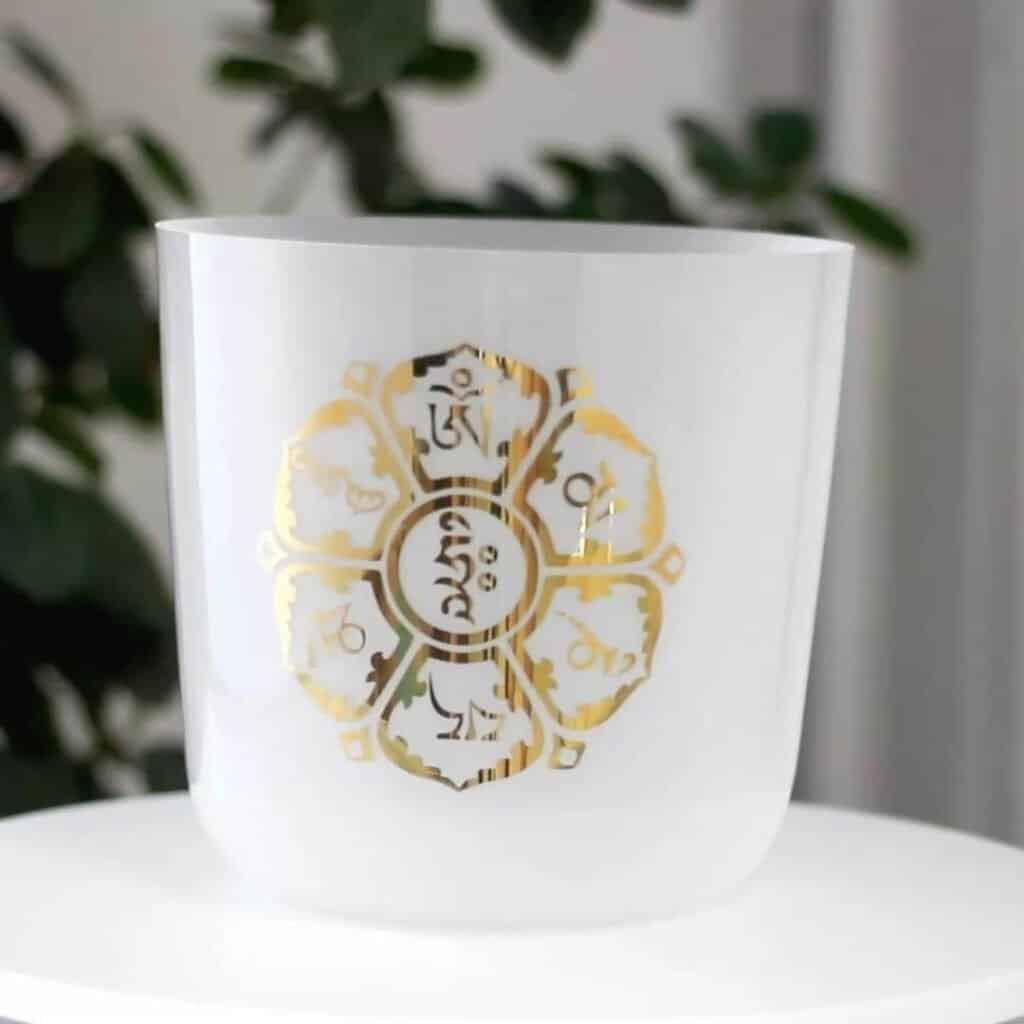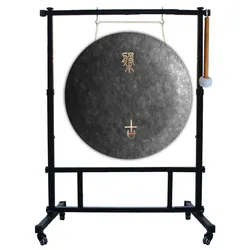Just as a painter blends colors to create a masterpiece, you can explore various meditation techniques to enhance your mental clarity and emotional wellness. From mindfulness to loving-kindness and even sound baths, each method offers unique benefits that cater to different needs. It's intriguing how one technique might resonate with your personal journey, while another could transform your outlook entirely. What if the right practice is waiting for you to uncover its potential?
Key Takeaways
- Mindfulness Meditation enhances present moment awareness and can be incorporated into daily activities for improved well-being.
- Loving-Kindness Meditation promotes compassion and emotional wellness, reducing negative self-talk and fostering better relationships.
- Zen Meditation cultivates awareness of the present moment, promoting inner peace by releasing distractions.
- Chakra Meditation aligns the body's energy centers, promoting emotional stability and overall well-being through visualization and breath.
- Transcendental Meditation uses mantra repetition for mental clarity, emotional balance, and stress reduction.
Mindfulness Meditation

Mindfulness meditation is a powerful tool that helps you stay present in the moment and cultivate awareness. By practicing daily mindfulness, you learn to focus on your thoughts and feelings without judgment. This practice isn't just for quiet moments; it can be incorporated into your daily activities, including eating. Mindful eating encourages you to savor each bite, appreciate the flavors, and become aware of your body's hunger signals. Instead of rushing through meals or mindlessly snacking, you'll engage fully with the experience of eating, allowing you to enjoy your food while fostering a healthier relationship with it.
To get started, find a quiet space and take a few deep breaths. Notice any thoughts that arise, and gently bring your focus back to your breath or the activity at hand, such as eating. Each time you drift off, return your attention without self-criticism. Aim for consistency; even five minutes a day can make a difference. As you develop this practice, you'll find that daily mindfulness not only enhances your eating habits but also improves your overall well-being, enabling you to navigate life's challenges with greater ease and clarity. Embrace this journey toward a more conscious life!
Transcendental Meditation
Transcendental Meditation, often referred to as TM, offers a unique approach to achieving inner peace and mental clarity through its simple technique of silent mantra repetition. You don't need any prior experience to get started, and many practitioners report numerous benefits, from reduced stress to increased creativity. In this section, we'll explore how TM works and what it can bring to your life.
Technique Overview
When you're looking to deepen your meditation practice, Transcendental Meditation (TM) stands out as a popular technique that many find effective. Unlike some meditation styles that focus on mindfulness or concentration, TM is a mantra-based practice, which means you'll be silently repeating a specific mantra to help settle your mind. This technique encourages a state of profound rest and relaxation, allowing you to transcend ordinary thought patterns, letting go of distractions.
In terms of technique comparison, TM is often viewed as simpler and more effortless than other forms of meditation. With its standardized instruction through certified teachers, you won't have to worry much about the method itself; you can concentrate solely on your experience. This clarity allows TM practitioners to engage deeply with their practice from the get-go.
As you commence this journey, you'll find that TM can be practiced twice a day for about 15-20 minutes, making it accessible even for those with busy schedules. By dedicating this time, you may discover a unique sense of peace and clarity that enhances both your meditation experience and your daily life.
Benefits of Practice
Practicing Transcendental Meditation offers numerous benefits that can greatly enhance your life. One of the most significant advantages is stress reduction. When you engage in this form of meditation, you learn to settle into a state of deep relaxation, allowing your mind and body to release tension. This relaxation response helps lower your heart rate and cortisol levels, promoting a calmer mindset that can last well beyond your meditation session.
Another key benefit is emotional balance. Through regular practice, you develop greater awareness of your thoughts and emotions, allowing for better emotional regulation. Instead of reacting impulsively to stressors, you'll find yourself responding with a sense of calm and clarity. This balanced emotional state leads to healthier relationships, improved decision-making, and an overall greater sense of well-being.
Moreover, practitioners often notice an enhanced ability to focus and think clearly. As your mind quiets during meditation, you create space for creativity and problem-solving to flourish. Ultimately, Transcendental Meditation equips you with essential tools to manage life's challenges, fostering both an inner peace and resilience that serve you well in your daily life. Embrace the journey and experience these remarkable benefits for yourself.
Loving-Kindness Meditation

Loving-Kindness Meditation, often referred to as Metta, invites you to foster a sense of compassion and goodwill towards yourself and others. By practicing this technique, you not only enhance your emotional well-being but also cultivate deeper connections with those around you. Let's explore the benefits of Loving-Kindness and the steps you can take to incorporate it into your daily routine.
Benefits of Loving-Kindness
Loving-kindness meditation, often referred to as "metta" meditation, offers a wealth of emotional and mental health benefits. When you practice this technique, you cultivate feelings of love, compassion, and goodwill towards yourself and others. One of the most profound loving kindness benefits is its ability to enhance emotional wellness. As you extend kindness to yourself, you may notice a decrease in negative self-talk and an increase in self-acceptance.
Additionally, this practice fosters a deeper connection with those around you. As you wish well for others, it helps to diminish feelings of resentment and anger. Scientific studies support the idea that loving-kindness meditation can lead to decreased anxiety and depression, promoting a more positive outlook on life. You might find that your relationships improve, as the practice encourages open-heartedness and understanding.
Furthermore, loving-kindness meditation encourages a sense of community, reminding you that you're not alone in your struggles. By connecting with the shared human experience, you can experience greater empathy and compassion for others, allowing love and kindness to flow more freely in your life. Overall, committing to this meditation can give you profound emotional and mental benefits that ripple outward.
Steps to Practice
To commence a loving-kindness meditation practice, find a quiet space where you can sit comfortably. Confirm your meditation posture supports relaxation; sit with your back straight but not rigid, allowing your body to feel both relaxed and alert. You can choose to sit cross-legged on the floor, on a cushion, or in a chair with your feet flat on the ground.
Begin by closing your eyes and taking a few deep breaths. As you settle into your daily routine of meditation, focus on generating feelings of love and kindness. You can start by silently repeating phrases like "May I be happy, may I be healthy, may I be safe, may I live with ease.�?Allow these feelings to fill your heart and mind.
Next, extend those wishes to loved ones, acquaintances, and even those you might've had conflict with. Picture them in your mind and repeat the phrases for them as well. Finally, encompass all living beings with your love and kindness. By practicing this empathetic approach regularly, you'll cultivate a deeper sense of compassion and connection both towards yourself and others. Enjoy the journey of loving-kindness meditation!
Body Scan Technique
Often used in mindfulness practices, the Body Scan Technique invites you to connect with your physical sensations and promote relaxation. This technique encourages you to take a moment to become aware of your body from head to toe. You'll start by finding a comfortable position, either lying down or sitting. As you breathe deeply, focus your attention on each area of your body, slowly moving from your toes up to the crown of your head.
As you scan, notice any tension you might be holding. Acknowledge these sensations without judgment, allowing yourself the space to gently release any tightness you discover. This simple practice cultivates body awareness, enhancing your understanding of where you hold stress and how to alleviate it.
When you complete the scan, take a few more deep breaths, enjoying the sense of relaxation that washes over you. You'll likely find that by engaging in this process regularly, it becomes easier to recognize and release tension in your daily life. The Body Scan Technique not only fosters physical relaxation but also promotes a deeper sense of connection to your mind and body, paving the way for a more mindful existence.
Guided Visualization

Guided visualization is a powerful technique that uses your imagination to create vivid mental images and scenarios, helping you relax and focus. This method involves guided imagery, where you visualize specific scenes or situations that promote calmness and clarity. You might picture yourself on a serene beach, feeling the warm sun on your skin, or wandering through a tranquil forest, listening to the gentle rustle of leaves. These visualization techniques are designed to engage your senses, allowing you to immerse yourself fully in the experience.
As you practice guided visualization, you strengthen your ability to concentrate and improve your overall well-being. To begin, find a quiet space, close your eyes, and take deep breaths. As you relax, invite the imagery to flow naturally. You might want to follow along with a recording or a live guide who can provide gentle prompts to keep you anchored in your visual journey.
Regularly engaging in guided visualization can assist in reducing stress, enhancing creativity, and even fostering positive changes in your life. By incorporating this technique into your meditation practice, you empower yourself to harness the transformative power of your imagination.
Breath Awareness Meditation
Breath Awareness Meditation offers a powerful opportunity for you to enhance your mental clarity and emotional stability. By focusing on your breath, you can cultivate a deeper understanding of your thoughts and feelings, which ultimately leads to personal growth and peace of mind. In this section, we'll explore the benefits of this technique and provide practical tips to help you get started.
Benefits of Breath Awareness
Practicing breath awareness meditation offers a multitude of benefits that can enhance both your mental and physical well-being. This technique encourages you to focus on your breath, leading to improved breath control and promoting focused relaxation. By tuning into your breathing patterns, you can cultivate a sense of calm and clarity that can deeply transform your daily life.
Here are some key benefits you'll enjoy with breath awareness meditation:
- Reduced Stress: Regular practice helps lower cortisol levels, which can reduce feelings of anxiety and tension.
- Improved Concentration: By honing your ability to focus on your breath, you train your mind to concentrate better on tasks outside of meditation.
- Emotional Stability: This meditation technique fosters a greater understanding of your emotions, leading to more balanced responses in various situations.
- Enhanced Physical Health: Breath awareness can aid in better oxygen flow, promoting overall wellness and health.
Techniques for Practicing
Several effective techniques can enhance your experience with breath awareness meditation. First, find a quiet space where you won't be disturbed. Sit comfortably, ensuring your body is relaxed yet alert. You can close your eyes or keep them gently focused on a point in front of you.
Begin by taking a few deep breaths, observing how your chest and abdomen rise and fall. Then, shift your attention to your natural breath, simply noticing each inhale and exhale. To deepen your practice, you might try a technique comparison by alternating between focusing solely on your breath and incorporating a mantra, repeating a calming word or phrase.
For beginner tips, it's important to stay patient with yourself during this process. If your mind wanders—don't worry! Acknowledge the thought and gently guide your focus back to your breath. Start with short sessions, around five to ten minutes, and gradually increase the duration as you feel more comfortable. Finally, consider keeping a meditation journal. Recording your thoughts and feelings can help you track your progress and enhance your overall experience with breath awareness. Embrace the journey; it's all about finding balance and tranquility.
Zen Meditation

How can a simple practice bring profound peace and insight? Zen meditation, or Zazen, invites you to explore stillness while embracing the present moment. This practice emphasizes both the physical and mental aspects of meditation, grounding your awareness through the Zazen posture. By sitting upright and relaxed, you create the ideal environment for contemplation and inner clarity.
You'll often engage with key elements of Zen philosophy, which encourage you to let go of distractions. Here are some techniques you can incorporate into your practice:
- Zazen Posture: Settle into a comfortable, stable seated position. Your body should feel steady yet relaxed.
- Stillness Focus: Channel your attention inward, allowing distractions to fade as you cultivate peace.
- Koan Practice: Challenge your mind with a short, paradoxical statement or question, encouraging deeper inquiry and insight.
- Present Moment Awareness: Embrace each breath and sensation, connecting fully to your experience.
Mantra Meditation
Mantra meditation offers a powerful way to anchor your mind and elevate your consciousness. By engaging in mantra repetition, you focus on a specific word or phrase, often called a mantra, which resonates deeply with your intention. This repeated sound creates a vibration that helps clear distractions and negative thoughts, allowing you to immerse yourself in a more profound meditative state.
As you chant or silently repeat your mantra, pay close attention to the sound frequency it generates. Different frequencies can evoke various emotional and mental responses, harnessing energy that encourages relaxation or heightened awareness. Ideally, you'll find a mantra that feels personally significant, as this connection enhances the meditation experience.
To practice, sit comfortably in a quiet space, close your eyes, and begin your mantra repetition. Let the rhythm of the sound wash over you, and if your thoughts wander, gently guide them back to your mantra. Over time, you'll notice improvements in focus, calmness, and clarity. Mantra meditation is a lifelong tool you can turn to whenever you need to restore balance, allowing you to cultivate inner peace and a deeper connection to yourself.
Vipassana Meditation

Vipassana meditation, often referred to as insight meditation, encourages you to cultivate a deep awareness of your thoughts and sensations. Rooted in Buddhist traditions, its origins trace back over 2,500 years, providing you with a rich history that's both intriguing and enlightening. This practice allows you to directly observe your mind and body, fostering insights that can transform your understanding of reality.
Many people choose to deepen their practice through vipassana retreats, where immersive experiences guide you away from daily distractions. During these retreats, you'll typically engage in:
- Silent meditation: Enhances your focus and introspection.
- Mindful breathing: Aids in grounding your thoughts and maintaining present awareness.
- Body scanning: Promotes awareness of physical sensations as they arise.
- Walking meditation: Combines movement with mindfulness for a holistic experience.
Through these techniques, you'll discover how to recognize habitual patterns of thought and develop greater emotional resilience. As you progress in vipassana, your understanding of impermanence and interconnectedness will deepen, encouraging acceptance and compassion toward yourself and others. It's a profound journey into the art of awareness, and you might find it life-changing.
Chakra Meditation
Releasing your energy through chakra meditation can bring balance and harmony to your mind and body. This meditation technique focuses on aligning and balancing your seven chakras, which are energy centers within you. When you practice chakra meditation, you consciously connect with these centers, allowing for enhanced energy flow and emotional stability.
To begin, find a comfortable position, and take deep breaths to center yourself. Then, focus on each chakra, starting from the root at the base of your spine up to the crown at the top of your head. Visualize each chakra glowing with its respective color, feeling the energy building as you breathe. This focused attention helps facilitate chakra balancing, clearing blockages, and promoting a smooth flow of energy throughout your being.
As you progress, you may notice greater emotional resilience and mental clarity. Regular practice can help you reconnect with your inner self, fostering a sense of peace amid life's challenges. By engaging in chakra meditation, you empower yourself to take charge of your energy, creating a more balanced and vibrant existence. With time, you'll cultivate a deeper understanding of how energy flows within you, enriching your overall well-being.
Sound Bath Meditation

Experiencing a sound bath meditation can immerse you in a profound state of relaxation and healing. This unique practice utilizes vibrational sound frequencies to help you release stress and find inner peace. As you lie comfortably surrounded by a range of instruments like singing bowls, gongs, and chimes, the meditative sounds wash over you, creating a deeply immersive experience.
During a sound bath, you might notice several benefits, including:
- Enhanced relaxation: The soothing sounds help calm your nervous system.
- Mental clarity: Sound frequencies can cut through mental fog, promoting focus.
- Emotional release: Many find that the vibrations facilitate the release of pent-up emotions.
- Physical healing: Certain frequencies can resonate with your body's energy centers, promoting overall wellness.
As you surrender to these waves of sound, allow yourself to drift, experience the moment fully, and just be. You might even enter a meditative state that deepens your connection to yourself. Remember, it's important to approach each session with an open mind and heart, allowing the meditative sounds to guide you toward relaxation and healing. Enjoy this journey into the restorative power of sound!
Movement-Based Meditation
Movement-based meditation, often called mindful movement, combines physical activity with mental focus to cultivate awareness of your body and breath. You might consider incorporating practices like yoga integration or mindful walking into your routine. These methods encourage you to connect with each movement and sensation, enhancing your overall mindfulness.
In yoga integration, you focus on your breath as you shift between poses, allowing you to experience the flow of energy throughout your body. This process not only stretches your muscles but also quiets your mind, fostering a sense of peace that can be hard to achieve in daily life.
On the other hand, mindful walking invites you to notice each step you take. As you walk, pay attention to the feeling of the ground beneath your feet or the rhythm of your breath. This simple practice transforms an everyday activity into a profound meditation.
Both approaches emphasize being present, reminding you to engage fully with your body and environment. By integrating movement with meditation, you'll develop a deeper awareness of yourself and enhance your mental clarity, leading to a more balanced and harmonious life.
Conclusion
Incorporating various meditation techniques into your routine can truly transform your life, much like the wise sages of ancient times who understood the power of the mind for achieving inner peace. Whether you choose mindfulness, loving-kindness, or sound baths, each method offers unique benefits that help you reduce stress and enhance your emotional well-being. So, don't hesitate—explore these practices and discover the profound impact they can have on your overall harmony and connection with yourself and others.







